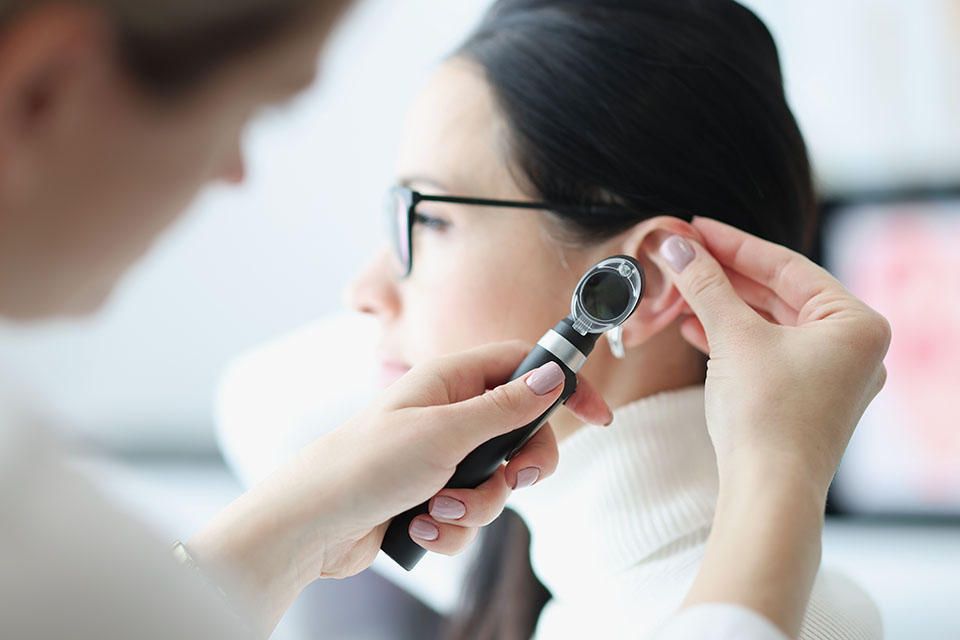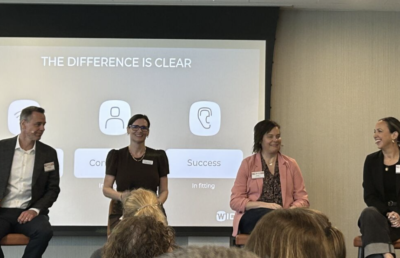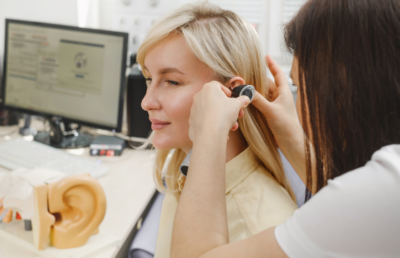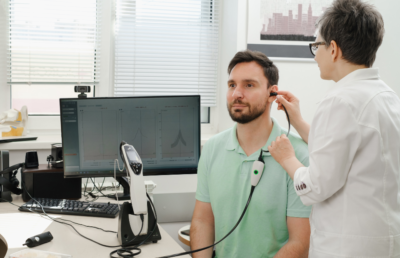Hearing loss is relatively common in the USA — around 48 million Americans have some degree of hearing loss, according to the Hearing Loss Association of America — and hearing tends to get naturally worse with age. While hearing loss affects people in different ways, if you’re experiencing any problems, better understanding the degree of your hearing loss will help you take the necessary next steps for better hearing health.
Difficulty understanding certain words in noisy environments, frequently asking people to repeat themselves, or turning up the volume on the TV are all signs that may indicate some degree of hearing loss. If these examples sound familiar, the first step is always taking a quick hearing test to determine the degree of your hearing loss. A professional audiologist can do this by measuring how loud a sound has to be before you notice it.
Sounds are measured in decibels. Hearing loss is also measured with decibels: the more sounds you can’t hear at certain decibel levels, the greater your hearing loss is. Determining the degree of your hearing loss is crucial, as hearing aids are tuned to make the sounds that cannot be heard louder, rather than just making all sounds louder.
The Different Degrees of Hearing Loss
Mild hearing loss: cannot hear sounds lower than 26 to 40 dB
Mild hearing loss may not be so noticeable, as you can still hear most sounds if you get a bit closer or turn the volume up. However, with mild hearing loss, you may find it difficult to understand certain words in noisy environments, soft spoken people, or children, and might struggle to hear quiet sounds like people whispering, electronic devices humming, or distant noises. You may be able to hear the loud or more intense vowel sounds but may miss some of the softer consonant sounds like “p” or “b”.
Moderate hearing loss: cannot hear sounds lower than 40-69 dB
Moderate hearing loss is definitely more noticeable, as you may find that you miss out on sounds that you’ve heard before or may frequently have to ask people to repeat themselves. Both mild and moderate hearing loss can typically be treated effectively with standard hearing aids. People with moderate hearing loss often comment that without hearing aids they can hear but can’t always understand speech and sounds. With moderate hearing loss, you may have to rely on visual cues, such as speechreading, to understand some people’s speech.
Severe hearing loss: cannot hear sounds lower than 70-94 dB
With severe hearing loss, you can’t hear people speaking without the use of hearing aids or other amplification in normal environments. You may have to turn up the TV to an extent that is bothersome for others. Family members or others will have to speak very loudly or shout for you to hear them speak. You miss relatively loud sounds like the phone, the doorbell, or traffic noises. Visual cues are necessary to understand what is being spoken.
Profound hearing loss: cannot hear sounds lower than 95 dB
If you have profound hearing loss, you can only hear extremely loud sounds, like thunder, fireworks, or an airplane engine. Conversations can only be detected with the help of a hearing aid and someone may perceive limited benefit. In order to comprehend speech, a cochlear implant is usually recommended. Visual cues are necessary to help understand speech.
How Visual Cues Help
Visual cues, like looking at a person’s lips while they speak in noisy environments, help people with hearing loss better understand speech. A 2018 study by the UCL Ear Institute in London found that visual information is integrated with auditory information at an earlier, more basic level than previously believed, independent of any conscious or attention-driven processes.
When information from the eyes and ears is temporally coherent, the auditory cortex — the part of the brain responsible for interpreting what we hear — boosts the relevant sounds that tie in with what we’re looking at. This means that for people with hearing loss, looking at somebody’s lips when they’re speaking doesn’t just help them hear because of their ability to recognize lip movements, but also because the timing of the movement aligned with the timing of the sounds tells their auditory neurons which sounds to represent more strongly.
To sum up, if you’re experiencing hearing loss, trying to pay attention to visual cues may help you hear better in certain environments. Asking people to face you when speaking to you will help as well. However, this alone is of course not enough and getting proper help from an audiologist is essential.
An audiologist is a professional who can quickly determine the degree of your hearing loss through a simple and easy hearing test and will be your biggest ally on your journey towards better hearing health. If you’ve already taken a hearing test, our article on How to Read an Audiogram can help you better understand your results at home. If you’d like to get your or a loved one’s hearing evaluated, book an appointment today.





